Britain will quit the EU single market when it leaves the European Union, prime minister Theresa May said on Tuesday (17), in a decisive speech that set a course for a clean break with the world’s largest trading bloc.
Setting out a vision that could determine Britain’s future for generations and the shape of the EU itself, May answered criticism that she has been coy about her strategy with a 12-point plan towards what has been dubbed a “hard Brexit”.
May promised to seek the greatest possible access to European markets, but said Britain would aim to establish its own free trade deals with countries far beyond Europe, and impose limits on immigration from the continent.
For the first time, she acknowledged that those measures would require withdrawing from the market of 500 million people, founded on principles of free movement of goods and people.
“I want to be clear: What I am proposing cannot mean membership of the single market,” said May, who was catapulted into the premiership after Britain voted in June to leave the EU. “Instead we seek the greatest possible access to it through a new comprehensive, bold and ambitious free trade agreement.”
The media had been briefed on some of the points in May’s speech since Sunday, and the expectation she would signal a hard Brexit had caused the pound to fall on currency markets from the start of this week.
However, markets rallied during the speech itself, especially when she made a new announcement that parliament would be given a vote on the final terms of Britain’s exit, seen as a steadying influence. Sterling rose 2.9 percent against the dollar on the day, the biggest single day rally since at least 1998.
“A BIT MORE CLARITY”
The Brexit talks are expected to be one of the most complicated negotiations in post-World War Two European history, and the view in Brussels is that her goal of wrapping up a trade deal in two years is ambitious.
May’s task will be further complicated by internal dissent within the United Kingdom, notably in Scotland, where a majority voted to remain in the EU. First Minister Nicola Sturgeon has raised the prospect of a new referendum on independence from Britain, which Scottish voters rejected in 2014.
“The UK government cannot be allowed to take us out of the EU and the single market, regardless of the impact on our economy, jobs, living standards ... without Scotland having the ability to choose between that and a different future,” said Sturgeon after May’s speech.
May campaigned to remain in the EU before last June’s vote, but since taking over from David Cameron, who quit following his referendum defeat, she has backed the decision to leave.
For months May has rejected criticism that she has been too silent about her plans, arguing that giving too much detail would weaken Britain’s negotiating stance.
European leaders had accused Britain of trying to “have its cake and eat it too” by seeking both unfettered trade and the right to curb immigration, without accepting that those objectives require a trade-off.
“It’s good that there is finally now a bit more clarity about Britain’s direction,” said German Economy Minister Sigmar Gabriel after the speech.
EU Council President Donald Tusk said May’s speech was “at least more realistic” and the 27 other member states stood ready to negotiate, but also lamented what he called a “sad process, surrealistic times”.
May said she would not adopt models already used by other countries that have free trade agreements with the EU. Norway, for example, is outside the bloc but a member of the wider European Economic Area, giving it access to the single market while subjecting it to many EU rules.
May outlined 12 negotiating priorities, including limiting immigration, exiting jurisdiction of the European Court of Justice, and ending full membership of the customs union that sets external tariffs for goods imported into the bloc.
Full membership of the customs union prevented Britain making its own trade deals, May said, but she still wanted a deal to keep trade with Europe as “frictionless as possible”.
Britain’s overwhelmingly foreign-owned car sector was quick to react, warning through industry body SMMT that participation in the customs union was vital to help retain trade.
Britain’s financial industry, which accounts for around 10 percent of the economy, is now expected to push ahead with plans to relocate parts of businesses out of Britain to ensure they can continue to sell their services across the EU.
“NO DEAL BETTER THAN BAD DEAL”
London will trigger the formal Brexit talks by the end of March, ushering in a two-year period of talks. May said she wanted the terms of Britain’s exit to be agreed within those two years, with new rules implemented gradually where necessary.
“It is in no one’s interests for there to be a cliff-edge for business or a threat to stability,” Maysaid. “We will do everything we can to phase in the new arrangements we require.”
But she also set a firm tone for the negotiations, warning: “No deal for Britain is better than a bad deal for Britain.”
She hinted that Britain could use tax breaks as a way to fight back to keep businesses if the EU insisted on punitive tariffs.
May’s speech comes as Northern Ireland, part of the UK most exposed to Brexit due to its land border with the EU member Irish Republic, faces political paralysis after a government that shared power between Catholics and Protestants collapsed.
One of May’s principles was “strengthening the union”, she said in a nod to both Northern Ireland and Scotland.
U.S. President-elect Donald Trump has said that Brexit will turn out to be a great thing and other countries would follow Britain out of the European Union. He promised to strike a swift bilateral trade deal with the United Kingdom.
May said she did not want the EU to unravel.
“It would not be in the best interest of Britain. It remains overwhelmingly and compellingly in Britain’s best national interest for the EU to succeed,” she said.
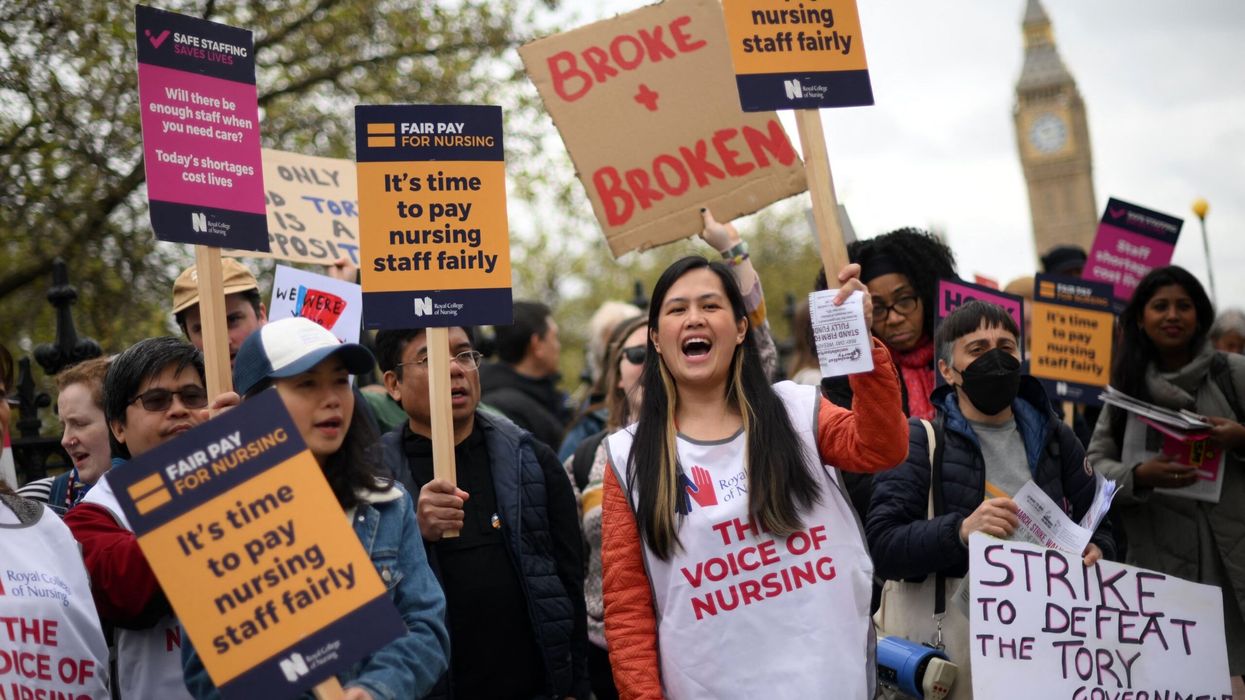
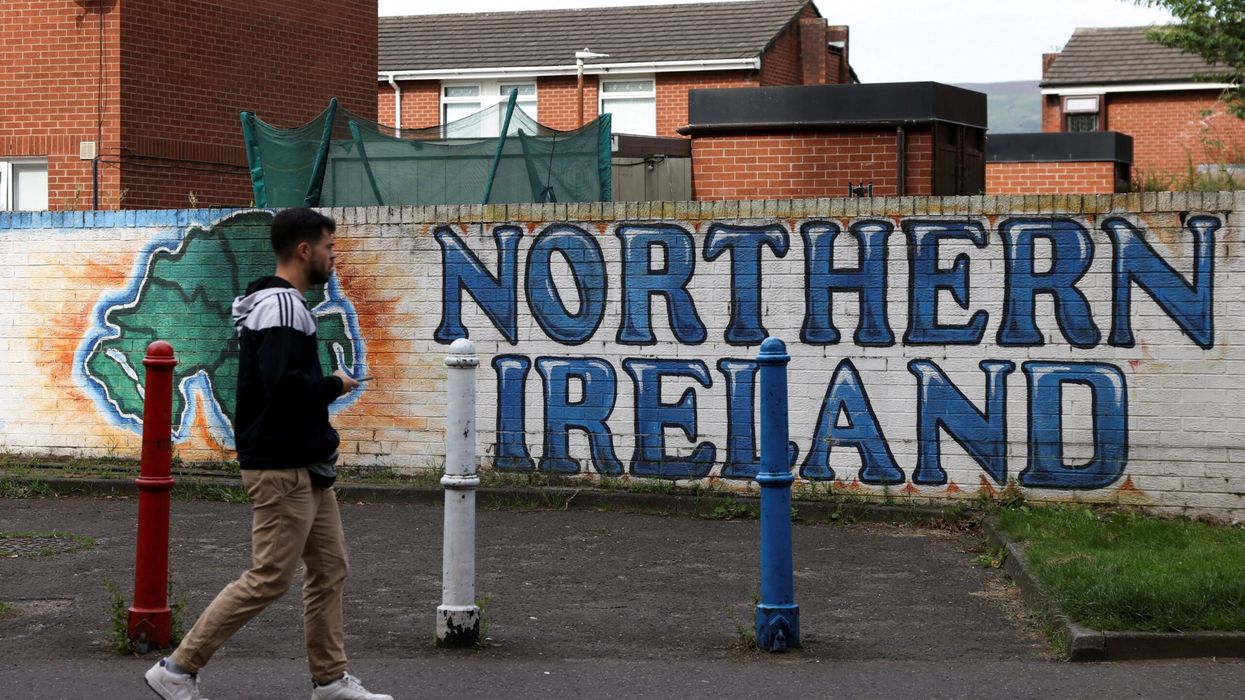

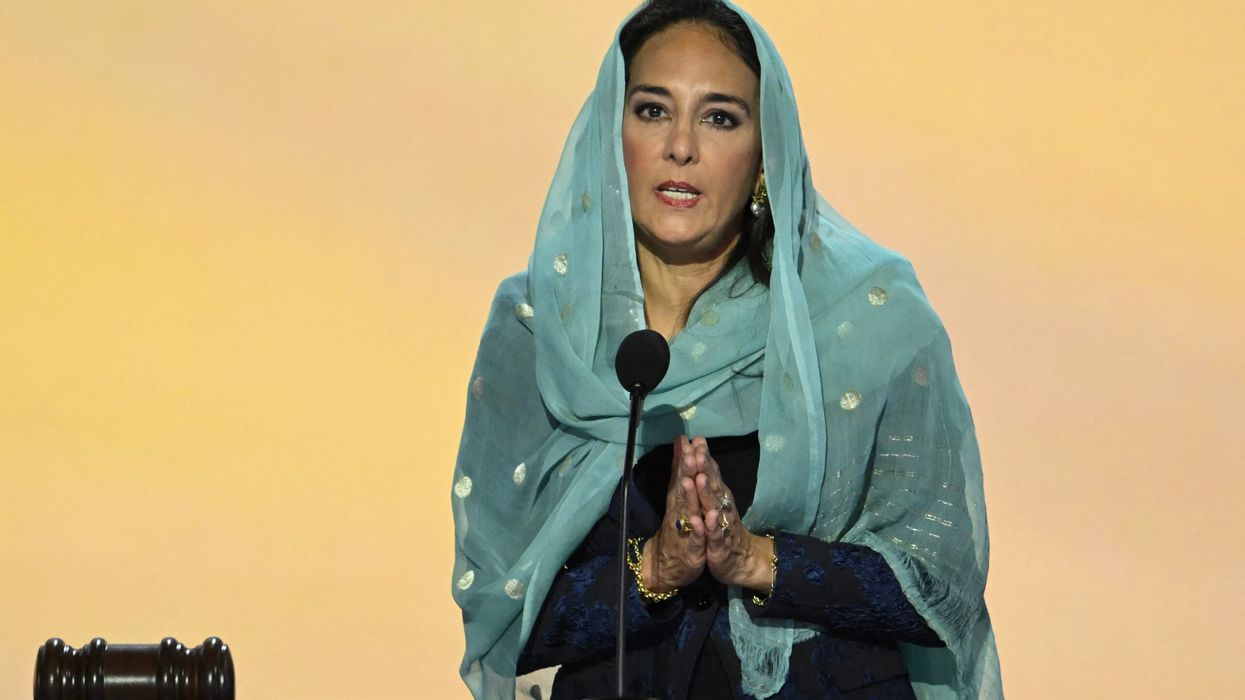
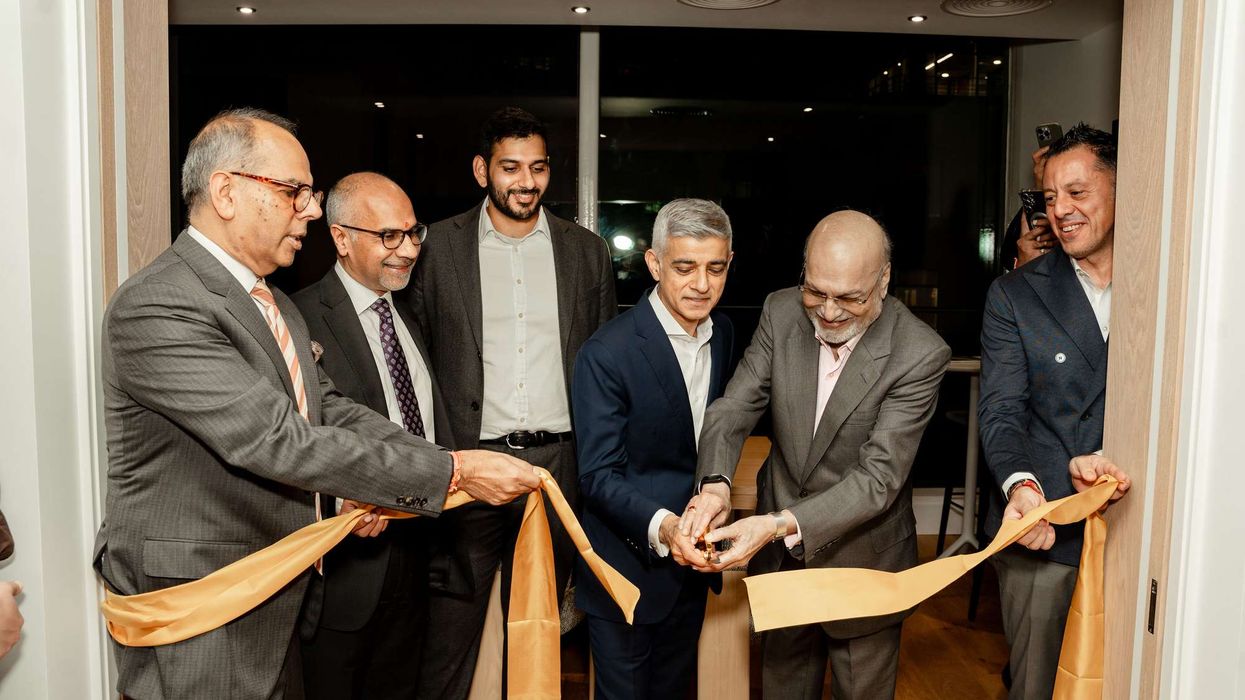
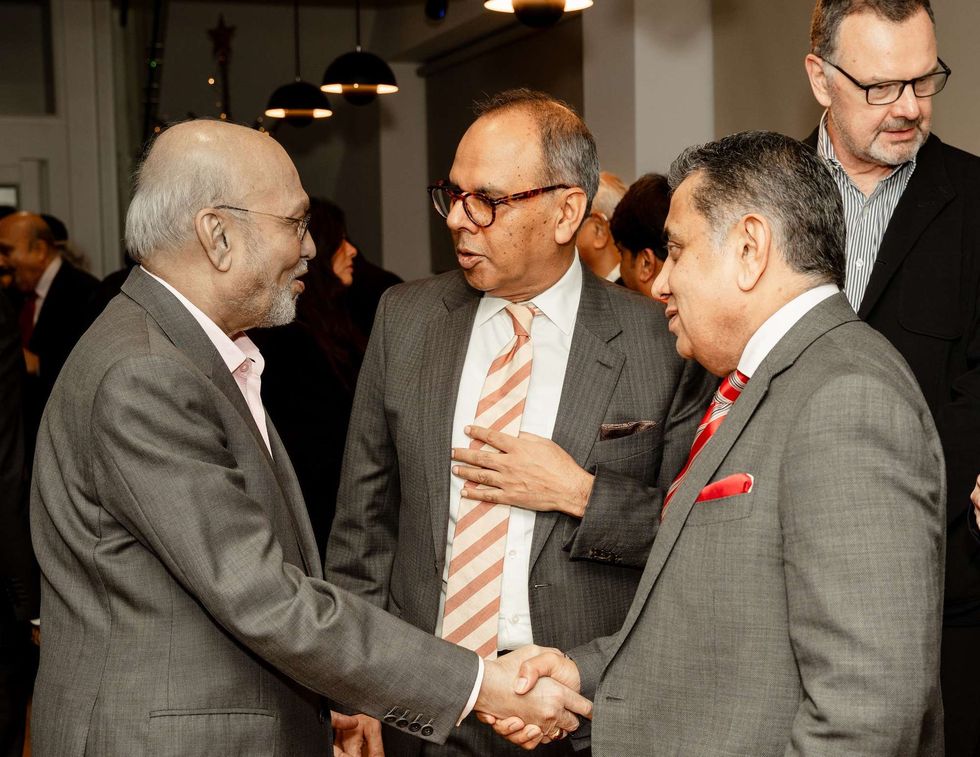 Nirmal Sethia, Kalpesh Solanki and Lord Tariq Ahmad
Nirmal Sethia, Kalpesh Solanki and Lord Tariq Ahmad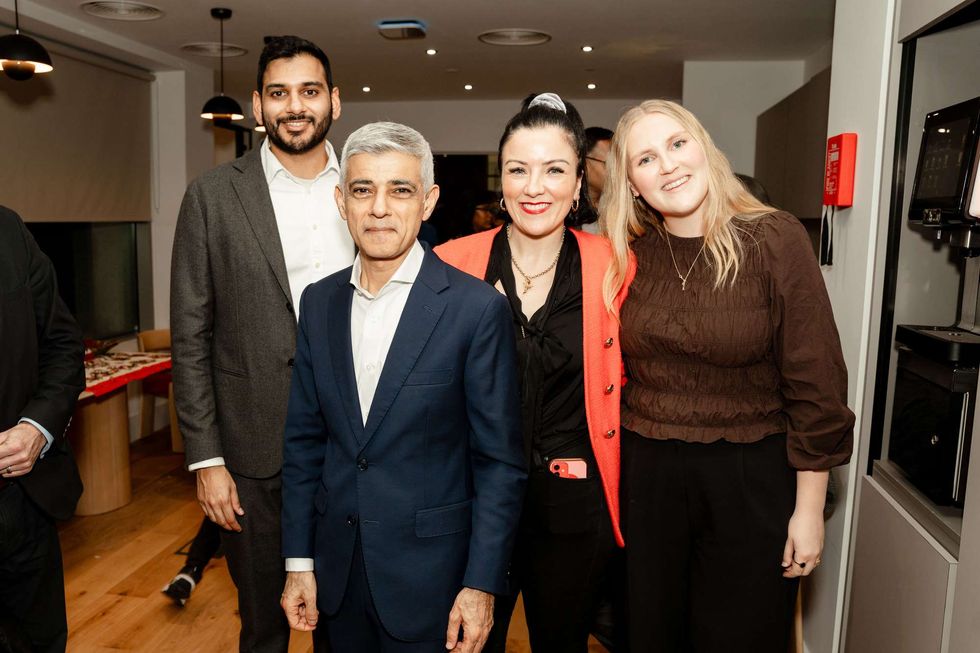 Jamin Solanki, mayor of London Sadiq Khan, Colette Whelan and Marnie Lane
Jamin Solanki, mayor of London Sadiq Khan, Colette Whelan and Marnie Lane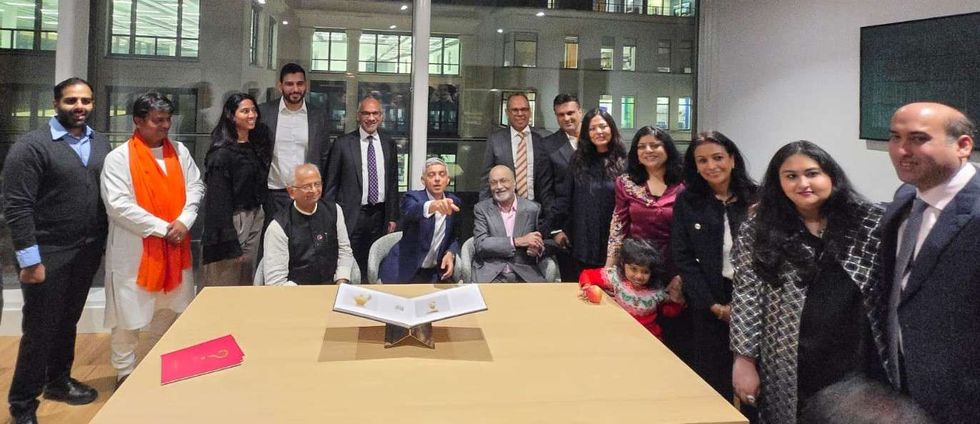 (Seated from left) Dr Nandakumara, Sadiq Khan, Nirmal Sethia
(Seated from left) Dr Nandakumara, Sadiq Khan, Nirmal Sethia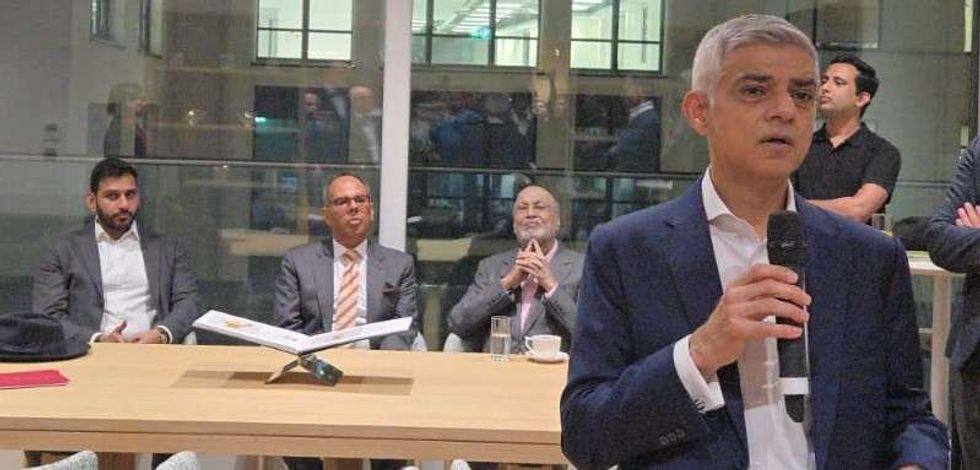 Mayor of London Sadiq Khan delivering his keynote speech.
Mayor of London Sadiq Khan delivering his keynote speech.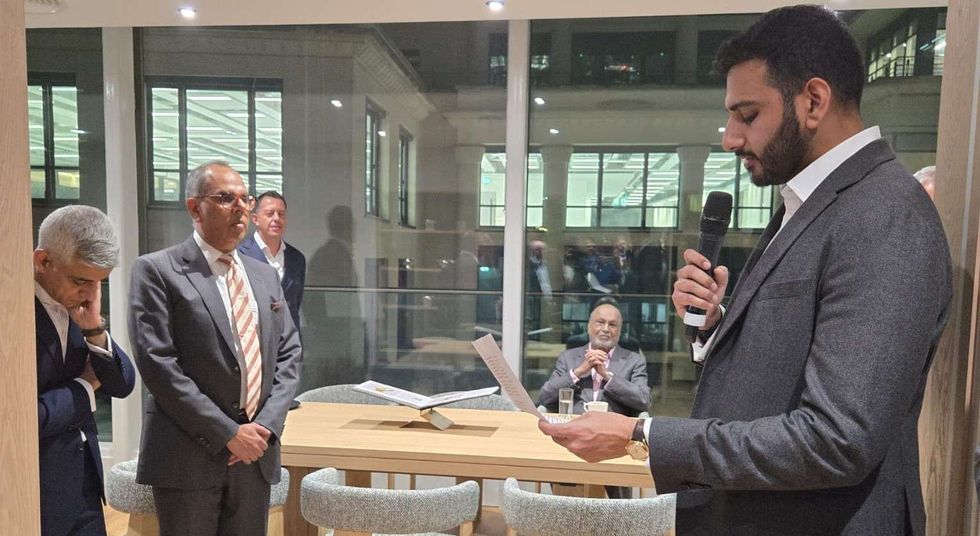 Jaimin Solanki addressing the gathering
Jaimin Solanki addressing the gathering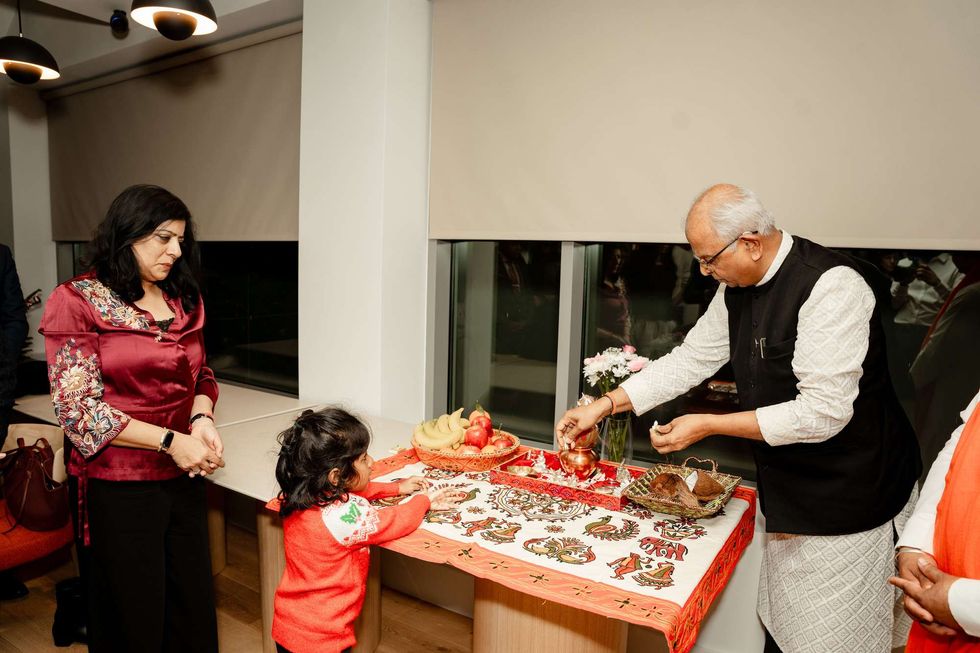 Dr Nandakumara guiding the Vaastu Pooja, with Aarya Solanki performing the pooja.
Dr Nandakumara guiding the Vaastu Pooja, with Aarya Solanki performing the pooja.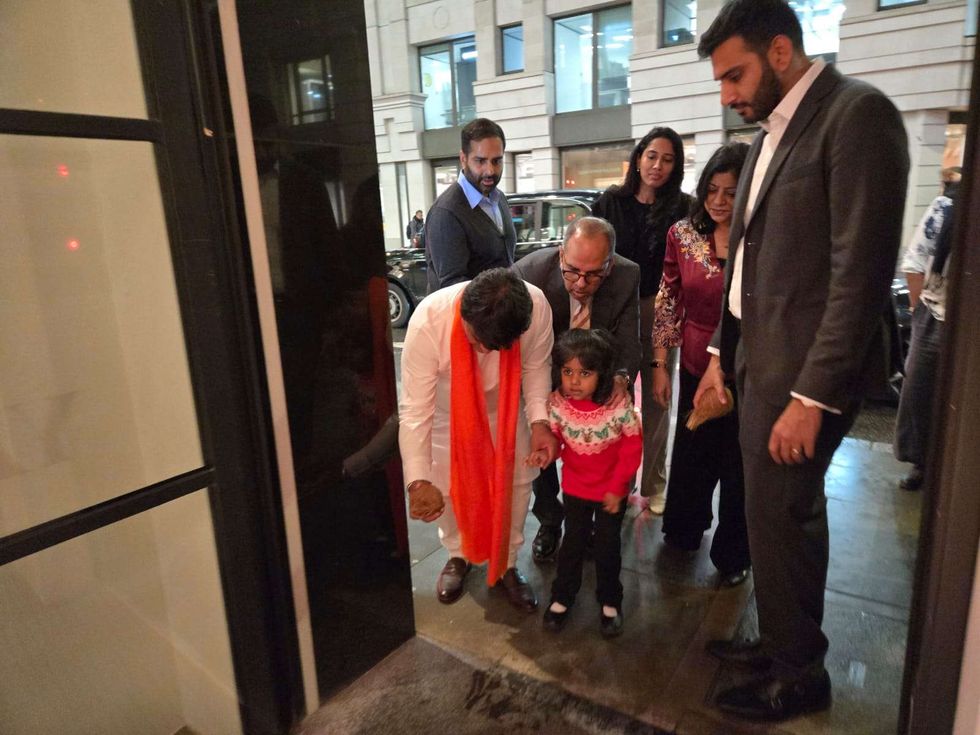 HH Guruji performing the coconut-breaking ritual.
HH Guruji performing the coconut-breaking ritual.





